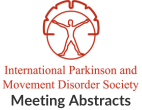Apraxia of speech as the initial manifestation of progressive supranuclear palsy
Objective: We report a patient with apraxia of speech as the initial symptom who finally developed a progressive supranuclear palsy. Background: Progressive supranuclear palsy (PSP)…A case series of sigmoid volvulus in Parkinson’s disease
Objective: To study the outcomes of patients with Parkinson's disease (PD) who were admitted with a diagnosis of sigmoid volvulus. Background: Constipation is a common…Carrier mediated delivery system bearing dopamine for effective management of parkinsonism
Objective: In the present investigation, amino acid coupled liposome bearing dopamine-HCl were prepared to deliver drug to the brain utilizing receptor-mediated transcytosis for effective management…Progressive ataxia and palatal tremor: A case report
Objective: To report a case of sporadic progressive ataxia and palatal tremor (PAPT). Background: PAPT is a rare disease with few case reports. It is…Incidence of dystonia in patients with progressive supranuclear palsy
Objective: To study the frequency of dystonic symptoms in progressive supranuclear palsy (PSP). Background: Progressive supranuclear palsy (PSP) is an uncommon brain disorder that affects…Clinical predictors of progressive supranuclear palsy (PSP) pathology in PSP syndrome
Objective: To elucidate specific clinical features of progressive supranuclear palsy (PSP) pathology in PSP syndrome. Background: PSP syndrome (PSPS) is the clinical hallmark of PSP;…Modeling trajectories of brain damage in progressive supranuclear palsy: A longitudinal multimodal MRI study
Objective: To explore longitudinally clinical, cognitive, and neuroimaging changes in patients with progressive supranuclear palsy syndrome (PSPs). Background: PSP is a progressive neurodegenerative disease. Longitudinal…Innsbruck multiple system atrophy cohort study – An interim analysis
Objective: To characterize the clinical presentation, to identify markers of disease progression and to assess diagnostic utility of 'red flags' in subjects with multiple system…Theta burst repetitive transcranial magnetic stimulation in a case with cortical-basal ganglionic degeneration
Objective: Corticobasal ganglionic degeneration (CBGD) is a progressive taupathy involving frontal and parietal cortices as well as basal ganglia. The disease is clinically characterized by…Motor features and response to levodopa in Parkinson’s disease with normal olfactory function
Objective: The aim of this study was to evaluate motor features in the OFF and ON states and the acute levodopa response in Parkinson's disease…
- « Previous Page
- 1
- …
- 86
- 87
- 88
- 89
- 90
- …
- 207
- Next Page »
